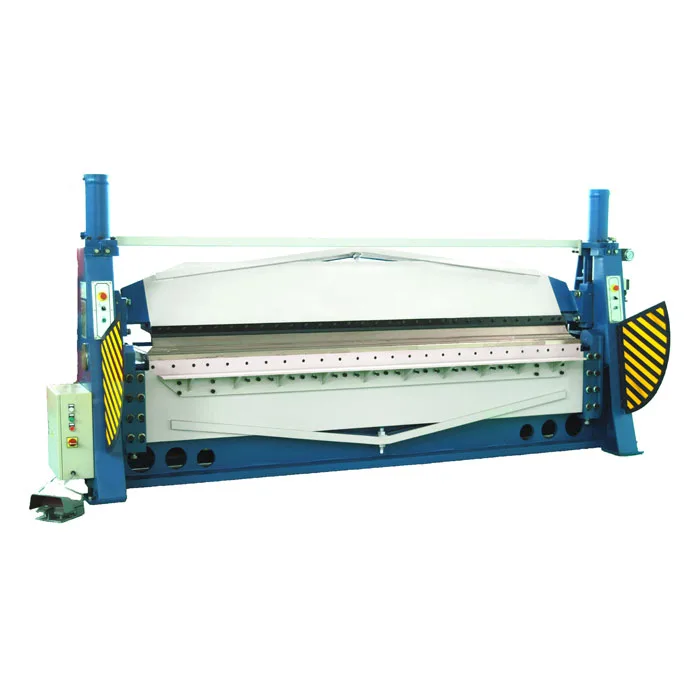
Key Features to Look for in a Duct Beading Machine
- By:Metmac
- 2024-09-14
- 157
In the realm of HVAC and ductwork fabrication, a duct beading machine plays a crucial role in shaping and assembling metal ducts. Whether you’re a small-scale contractor or a large-scale manufacturer, choosing the right beading machine is pivotal to ensure efficient, high-quality, and safe ductwork production. In this comprehensive guide, we’ll delve into the key features you should consider when selecting a duct beading machine, empowering you to make an informed decision that meets the specific needs of your operation.
Durability and Construction
Robust frame: Look for a machine with a heavy-duty frame made from durable materials like cast iron or steel to withstand the rigors of repeated use and heavy gauge material forming.
Precision engineering: Precision-machined components ensure accurate beading and consistent results. Check for components fabricated to tight tolerances to minimize vibration and noise levels.
Beading Capacity
Thickness range: Determine the thickness range of metal you’ll be working with. Choose a machine capable of handling the maximum thickness of material you encounter.
Beading width: The beading width refers to the width of the fold created on the edge of the metal. Select a machine with a range of beading widths to accommodate various duct sizes and designs.
Forming Rollers
Multiple profiles: Look for a machine with multiple forming rollers to create different bead profiles. Common profiles include Pittsburgh, S-Cleat, and snap-lock.
Adjustable pressure: Adjustable pressure settings allow you to fine-tune the beading force to match the material thickness and desired bead quality.
Hardened steel rollers: Hardened steel rollers provide extended durability and resistance to wear and tear. They ensure consistent beading results over a prolonged period of use.
Safety Features
Emergency stop button: A readily accessible emergency stop button is essential for minimizing risks in the event of any operational issues or accidents.
Pinch-point protection: Proper guarding and shields should prevent accidental contact with moving parts, such as the beading rollers and drive mechanisms.
Safety instructions: Clear and comprehensive safety instructions should be provided with the machine to ensure proper understanding and operation.
Ease of Operation
User-friendly controls: Intuitive controls and a clear display make it easy to adjust settings and monitor machine performance.
Adjustable speed: Variable speed controls allow you to optimize the beading process for different materials and beading requirements.
Ergonomic design: Ergonomic handles and a comfortable working height reduce operator fatigue and enhance overall productivity.
Maintenance and Service
Easy access to components: The machine’s design should allow for easy access to components for maintenance, cleaning, and part replacement.
Availability of replacement parts: Ensure that the manufacturer provides readily available replacement parts to minimize downtime in case of any necessary repairs.
Warranty and support: A comprehensive warranty and dedicated technical support from the manufacturer provide peace of mind and ensure that you have the necessary assistance when needed.
-
Sheet Metal Shearing Machine: The Foundation of Precision Cutting with METMAC
2025/11/23 -
Sheet Metal Press Machine: The Cornerstone of Precision Fabrication with METMAC
2025/11/23 -
Sheet Press Machine: The Engine of Precision Metal Forming with METMAC
2025/11/23 -
Sheet Metal Equipment: The Backbone of Modern Fabrication and the METMAC Standard
2025/11/23
-
Advanced Sheet Metal Rolling, Laser Cutting, and Folding Machines for Precision Fabrication
2025/10/31 -
High-Performance Sheet Metal Bending and Cutting Machines for Modern Fabrication
2025/10/31 -
High-Quality Sheet Metal Equipment for Sale: Efficient Solutions for Modern Manufacturing
2025/10/31 -
High-Performance Sheet Metal Equipment for Sale: Forming and Shearing Solutions for Modern Fabrication
2025/10/22
-
A Guide to the Latest Innovations in Sheet Metal Folding Machines
2024/11/29 -
Key Features to Consider When Investing in a Sheet Metal Folding Machine
2024/11/28 -
Enhancing Precision with Advanced Sheet Metal Folding Machines
2024/11/27 -
How to Choose the Right Sheet Metal Folding Machine for Your Workshop
2024/11/26







